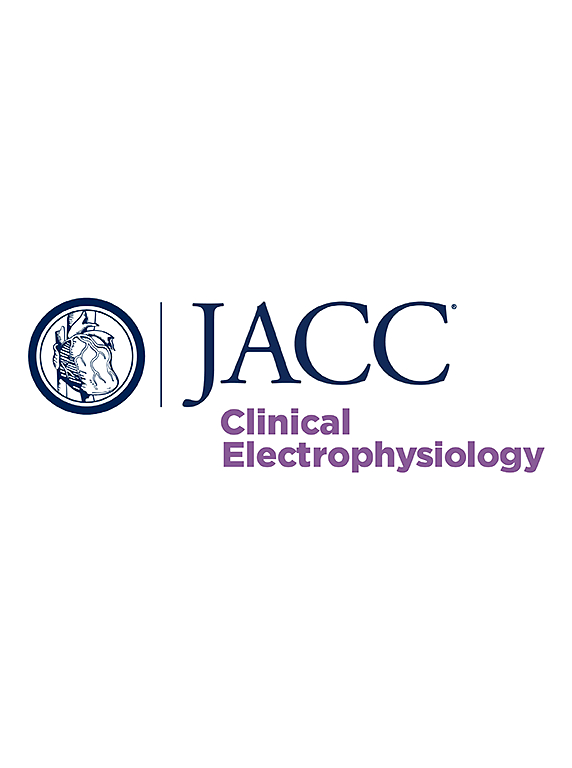心房颤动患者早期导管消融的益处:一项全国性队列研究
IF 8
1区 医学
Q1 CARDIAC & CARDIOVASCULAR SYSTEMS
引用次数: 0
摘要
背景:虽然早期心律控制对房颤(AF)患者有较好的临床结果,但关于房颤导管消融(AFCA)时机与临床结果的关系数据有限。目的:本研究探讨早期与晚期AFCA对临床结果的影响。方法:使用韩国索赔数据库,对944,710例无AFCA的AF患者进行调查。结果:共有57,804例房颤患者(无房颤38,536例,有房颤19,268例;平均年龄57.8岁;73.5%男性),平均随访2.6±1.5年。在所有研究结果中,AFCA与较低的风险相关(hr: 0.26-0.41;P < 0.001)。与早期afca组相比,中期和晚期afca组HF住院和全因死亡的风险更高。此外,与早期和中期afca组相比,晚期afca组发生主要不良心血管事件、综合结局和AF复发的风险更高。在权衡倾向得分后,结果与初步分析基本一致。结论:早期AFCA可以改善临床结果,主要是由于HF住院和AF复发的风险降低。本文章由计算机程序翻译,如有差异,请以英文原文为准。
Benefits of Early Catheter Ablation in Patients With Atrial Fibrillation
Background
Although early rhythm control showed better clinical outcomes in patients with atrial fibrillation (AF), limited data exist on the relationship between the timing of atrial fibrillation catheter ablation (AFCA) and clinical outcomes.
Objectives
This study investigated the impact of early vs late AFCA on clinical outcomes.
Methods
Using the Korean claims database, 944,710 AF patients without previous AFCA were investigated. These patients were categorized into 3 groups based on the duration from their AF diagnosis to AFCA: <1 year (early-AFCA), 1 to <3 years (intermediate-AFCA), and ≥3 years (late-AFCA). The study outcomes included ischemic stroke, heart failure (HF) hospitalization, myocardial infarction, major adverse cardiovascular events (comprising the aforementioned three), all-cause mortality, a composite outcome (encompassing all mentioned outcomes), and AF recurrence.
Results
A total of 57,804 AF patients (38,536 without AFCA and 19,268 with AFCA; mean age 57.8 years; 73.5% men) were followed up for an average of 2.6 ± 1.5 years. AFCA was associated with lower risks across all study outcomes (HRs: 0.26-0.41 for all outcomes; all P < 0.001). Compared with the early-AFCA group, the intermediate- and late-AFCA groups showed higher risks of HF hospitalization and all-cause mortality. Additionally, the late-AFCA group had higher risks of major adverse cardiovascular events, composite outcomes, and AF recurrence than those of the early- and intermediate-AFCA groups. After weighing the propensity scores, the results were largely consistent with the primary analysis.
Conclusions
Early AFCA showed improved clinical outcomes, primarily caused by decreased risk of HF hospitalization and AF recurrence.
求助全文
通过发布文献求助,成功后即可免费获取论文全文。
去求助
来源期刊

JACC. Clinical electrophysiology
CARDIAC & CARDIOVASCULAR SYSTEMS-
CiteScore
10.30
自引率
5.70%
发文量
250
期刊介绍:
JACC: Clinical Electrophysiology is one of a family of specialist journals launched by the renowned Journal of the American College of Cardiology (JACC). It encompasses all aspects of the epidemiology, pathogenesis, diagnosis and treatment of cardiac arrhythmias. Submissions of original research and state-of-the-art reviews from cardiology, cardiovascular surgery, neurology, outcomes research, and related fields are encouraged. Experimental and preclinical work that directly relates to diagnostic or therapeutic interventions are also encouraged. In general, case reports will not be considered for publication.
 求助内容:
求助内容: 应助结果提醒方式:
应助结果提醒方式:


